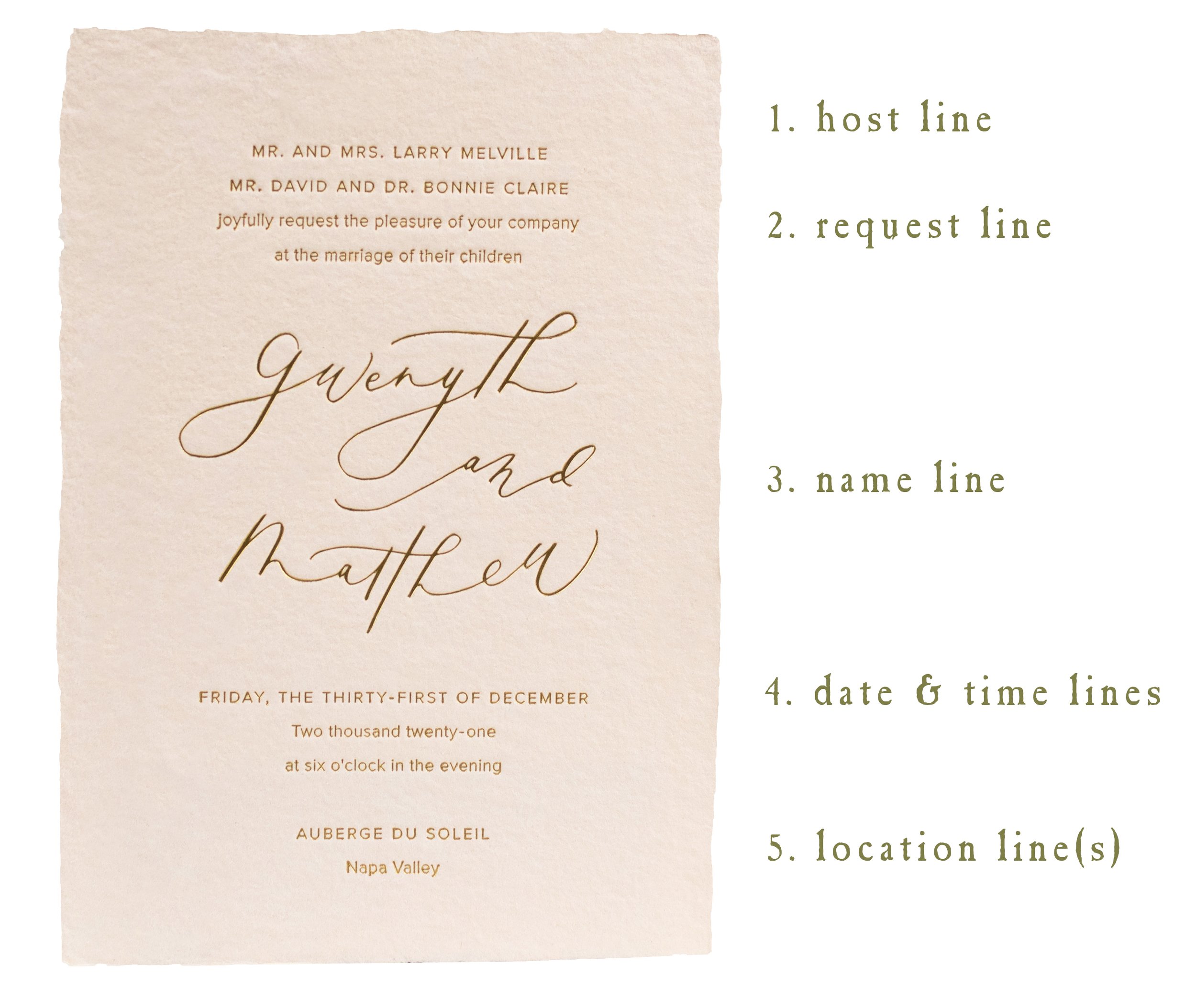wedding invitation wording & etiquette
wedding invitations have changed enormously in the last decade, becoming less rigid and serving as a reflection of each couple’s unique personality and story. as a result, invitation wording and etiquette have evolved.
even so, it can help to know the traditional elements many expect as you begin the process of designing your invitations. you can then decide what aspects to maintain and what to toss aside in favor of something more unique.
1. host line
this is the line that typically denotes who is hosting, or paying for the bulk of the wedding. traditionally, only the bride’s parents were listed on the invitation. today, there are numerous options as your parents may or may not be contributing to your wedding financially, and sometimes bride and groom simply would like to include both sets of parents. other factors, such as whether the host(s) are married, divorced or remarried will also affect how this portion of the invitation is worded - our staff is happy to help in these more complicated situations.
2. request line
the request line usually hints at what kind of location the wedding will take place at. "the honor of your presence" is reserved for a ceremony taking place in a house of worship such as a church or temple, while "the pleasure of your company" is reserved for non-religious locations. additionally, if both sets of the couple's parents are hosting, this line would specify "at the marriage of their children" as well.
3. name line
here is where the names of the couples are listed and is often one of the more visually striking aspects of your invite. traditionally the bride always preceded the groom and was referred to by her first and middle names only, while the groom was referred to by his first, middle and last name.
today, some couples use only their first names or show both full names. it comes down to personal preference as well as your invitation style.
4. date & time line
traditionally, all time and dates are spelled out. time of day is spelled out using o’clock or half after xx o’clock and no part of the time is ever capitalized. evening begins at five o’clock, otherwise it is considered afternoon from noon until four o’clock.
today, designs have changed such that numerals are often used for time and date for a more modern feel. if you go this route, it is nice to be consistent throughout the invitation suite and use numerals for each event.
5. location line(s)
if the reception is at the same location as the ceremony, the reception information can be listed at the bottom of the invitation (“reception to follow” or “dinner and dancing to follow” or “celebration to follow”). if the reception is at a different location, there is typically a separate reception card included in the invitation suite. very traditional or formal invitations forgo location information altogether on the invitation and include it in a separate card.
other considerations
attire:
if a specific dress code is desired, let your guests know by including a line in the bottom left or right corners of the wedding invitation. only the first letter of this line is ever capitalized on the wedding invitation. traditional examples include:
black tie: tuxedo or dinner suit for men, formal gown for ladies
formal/black tie optional: suit and tie for men, fancy dress for ladies
semi-formal: suit and tie for men, cocktail dress for ladies
cocktail attire: suit with tie optional for men, cocktail dress for ladies
garden party: summer suit for men, summer dress for ladies.
registry information:
listing your registry information on your wedding invitation is considered in poor taste. however, it is very acceptable to have your registry included on a bridal shower invitation, because the invitation is being generated by a friend or relative of the bride. word of mouth is another good practice to share your registry information. wedding websites are a more modern alternative that can be used to make this information both subtly and easily accessible. the best way to do this is to have a separate web-card included as an insert.
children:
as with your registry information, it is not typically acceptable to include a request for “no children” on your invitations or reception cards. we suggest that you speak with family and friends with children to indicate that, “although you’d really love to include the children, expenses (or the venue, or the nature of the event) prevent you from doing so.”

